Walking With Crutches
Indications and Types
Indications:
- Transfer weight from legs to upper body when legs cannot support weight
- Post-surgery or casting of lower limbs
Types of Crutches:
- Axillary crutches
- Elbow crutches
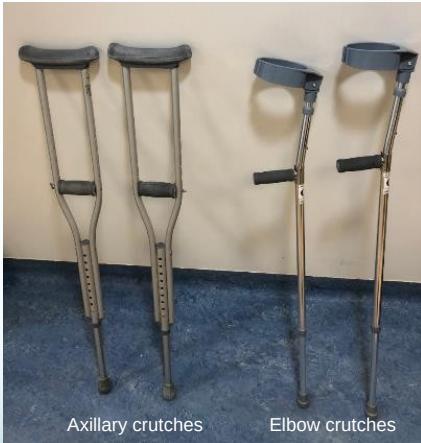
Axillary Crutch Fitting
Proper Adjustment:
- Total height: Axillary part should not press on axilla (5 cm away)
- Hand piece level: At level of wrist with elbow slightly flexed during weight transfer
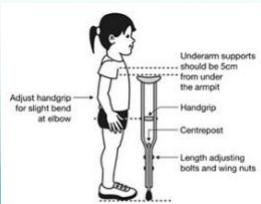
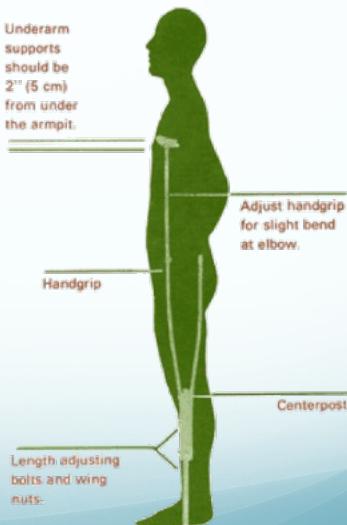
Walking Techniques
General Principles for Walking with Crutches
- Place crutches under arms and squeeze them to sides of body
- Move crutches 6-12 inches ahead, slightly away from body
- Push down on hand grips and step past crutches
- Support weight with hands, not under arms
- Check balance before proceeding
Walking with One Crutch
General Directions:
Step-by-Step Instructions:
- Place the crutch under the arm opposite your weaker leg
- Move the crutch forward and step with your weaker leg simultaneously (keep crutch close to body for support)
- Support weight on both crutch and weaker leg, then step past the crutch with your stronger leg
Repeat sequence:
- Step with crutch and weaker leg together
- Step with stronger leg
Visual Guide:
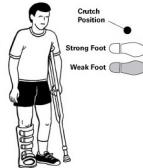
Tips for Safe Crutch Use:
- Carry items in a backpack
- Never hang or lean on crutch - support weight on hands, not under arms
- Maintain good posture
- Wear well-fitting, comfortable, supportive shoes
- Be careful on uneven or wet surfaces
- Walk at a safe, comfortable pace

Your therapist may show different techniques based on your specific situation
Walking with Two Crutches
Technique:
- Stand in the middle of your crutches
- Place crutches in front and step with weaker leg at the same time (crutches & weak leg together)
- Push down on hand grips and step past crutches with stronger leg
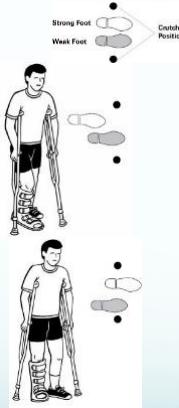 (Source: UPMC)
(Source: UPMC)
Visual Guide:
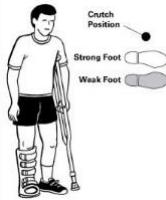


(Source: UPMC)
Weight-Bearing Protocols
1. Non-Weight Bearing
- Principle: Affected lower limb remains off ground at all times
- Technique:
- Start standing with all weight on normal side
- Transfer both crutches forward (small step - not too far)
- Put all weight on both crutches through hand pieces
- Transfer normal foot forward to line between both crutches (do not go beyond this line)
- Transfer body forward to level of crutches
2. Partial Weight Bearing
- Principle: Affected leg takes partial weight along with crutches
- Technique:
- Start standing with most weight on normal side, affected side touching floor
- Transfer both crutches forward along with affected leg (small step)
- Put partial weight on crutches through hand pieces AND partial weight on affected leg together
- Transfer normal foot forward to level of crutches
3. Partial Weight Bearing - More Weight on Affected Leg
- Principle: Affected leg takes more weight with only one crutch
- Technique:
- Use one crutch held on normal side
- Start standing with most weight on normal side, affected side touching floor
- Transfer crutch forward along with affected leg together (small step)
- Put partial weight on crutch through hand piece AND partial weight on affected leg together
- Transfer normal foot forward to level of crutch